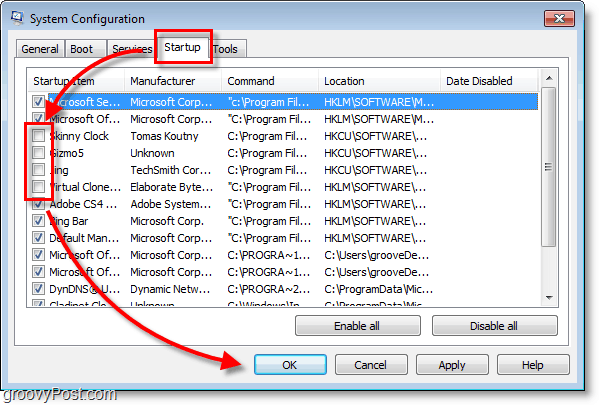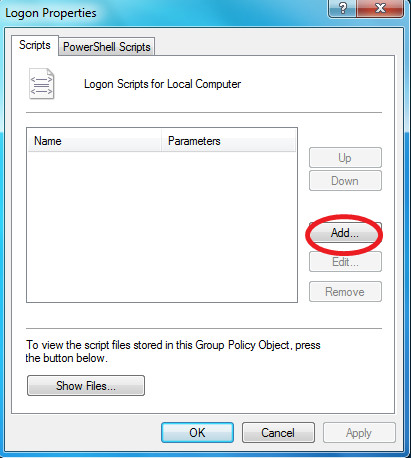
- #Windows 7 programs running on startup install
- #Windows 7 programs running on startup update
- #Windows 7 programs running on startup upgrade
- #Windows 7 programs running on startup code
One important step in optimizing your computer’s performance is by installing the latest updates.

#Windows 7 programs running on startup update
Update Windows with the latest definitions You can adjust your settings for “best performance”, “best appearance” or select the features that you want to activate one by one: Next, select an option from the ones available. In the “Performance tab” click the “Settings” button. You will then be prompted to the following screen:

After the window opens, click the “Advanced system settings” button from the right side. Right click “My Computer” and then select “Properties”. Features like Windows Aero, shadows or thumbnails can be disabled to boost your computer’s performance.

After calculating the disk space gained, you will be redirected to the following screen:Ĭheck all the things that you want to remove and then click the “OK” button.Īs you may already know, Windows comes by default with some visual effects activated. You will then be prompted to enter a disk partition on which the tool will execute. To open this tool simply type “Disk Cleanup” in the search bar. The “Disk Cleanup” tool is used to delete unnecessary data stored on your computer, such as temporary internet files, thumbnails, debug dump files, etc. Note that these tools will take a while to finish their operation. The “/r” parameter will locate bad sectors and will recover readable data, but also will fix disk errors. Open “command prompt” and type the following: I prefer running the command line tool rather than using the GUI. The “Error-checking” tool will fix any bugs from your hard-disk. The “Disk defragmentation tool” will align data blocks written on your hard drive in order to make them easier to be accessed by the OS. Now select the “Tools” tab and click on one of the tools listed here: To achieve this, right click on the desired partition (where the OS is installed) and then click “Properties”. These tools are used to speed up the performance of your hard disk.
#Windows 7 programs running on startup upgrade
After installing Windows 7 on the SSD drive, my computer performance increased significantly that’s why I recommend this upgrade to anyone.
#Windows 7 programs running on startup install
I advise you buy and install an SSD hard-drive for your computer’s OS. You should choose your hardware configuration according to your needs (what applications are you going to use on your workstation). Of course, when running applications that use of lot of resources (rendering software, Video games) I sometimes encounter slow performance. My home computer has around 4 Gb of RAM and Intel I3 processor and I have no problems running this version of Windows. Check out the recommended Windows 7 configuration and compare it with yours.

Consider improving your physical memory, CPU and Video Card where necessary. I won’t talk about improving your hardware components because you may already know that without a proper hardware configuration, your tuning may have no effect. I don’t know how many of you encountered slow performance, errors or even blue screens when running Windows platform, but I’ve been working with Windows 7 and previous editions for quite a while now and I can definitely say that the default settings of this OS can be tuned so that better results in terms of performance can be achieved. Some of these options are also available in Windows 8 and Server Editions that’s why I think this article is a good starting point in improving all Windows OS performance. Need to improve and speed up Windows 7 performance? Let’s talk about how you can do this by customizing and tuning some Windows features.
#Windows 7 programs running on startup code
Code Project Speed Up and Optimize Windows 7 Performance


 0 kommentar(er)
0 kommentar(er)
